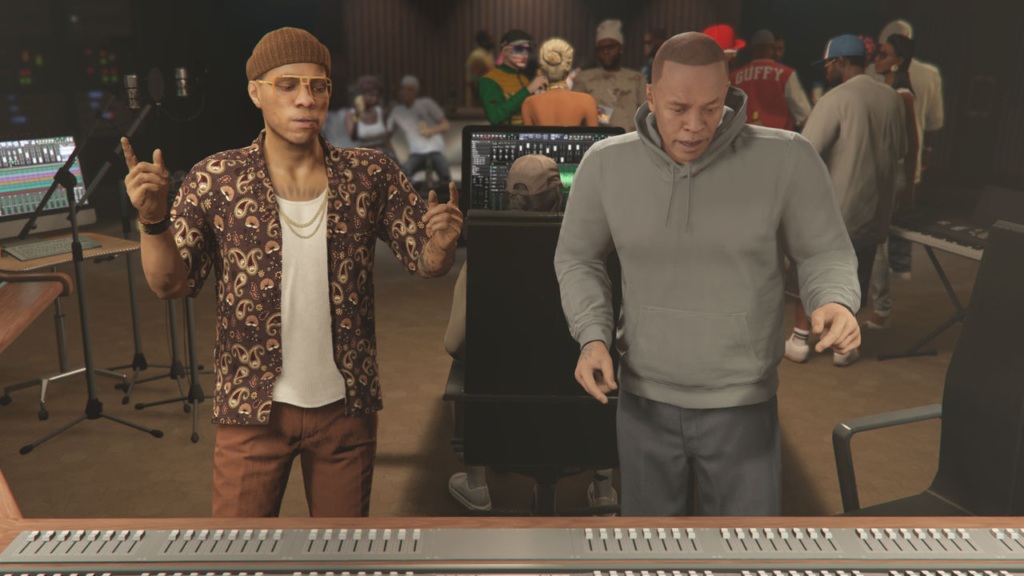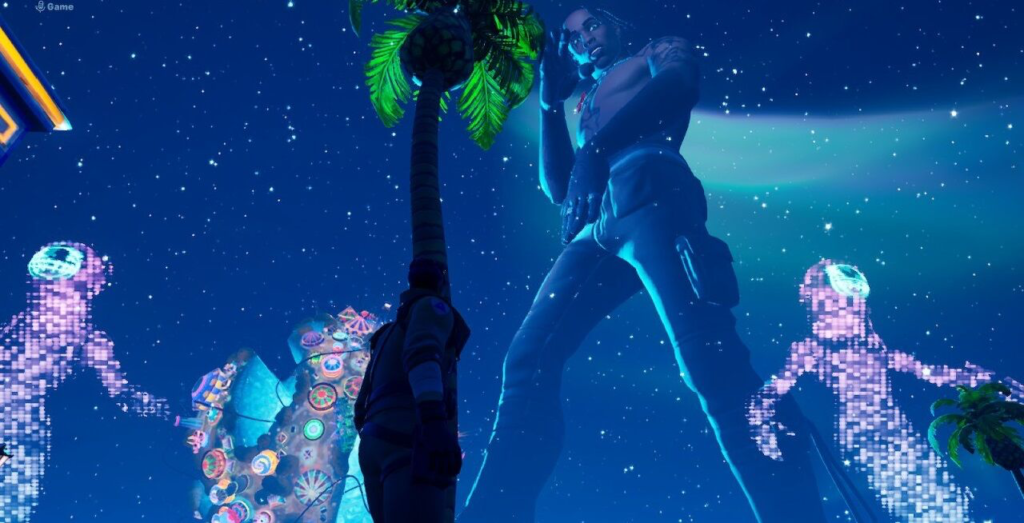With video games being one of my main themes throughout these blogs, I think it would be appropriate to put light on some artists that are prominent in both their respective industries and the video game industry.
While many games include their own music to further enhance the experience, some games use music from real life to achieve this. Notoriously, it has been a staple ever since the groundbreaking third entry in the Grand Theft Auto series, Grand Theft Auto III (2001), to include a new level of immersion in the form of radio stations in the New York City-inspired fictional setting of Liberty City. The popularity and memorability of these stations weren’t prominent until the following entries gained their own legendary status. GTA Vice City (2002) featured huge tracks, including Michael Jackson’s “Billie Jean”, Gary Numan’s “Cars”, and A Flock of Seagull’s “I Ran (So Far Away)”, and the following title, GTA San Andreas (2004), upped their budget for artists even more with Dr. Dre, NWA, and 2Pac being featured to compliment the game’s Los Angeles inspired setting.

More and more games took notes and similar game series like Saint’s Row, Watch Dogs, Just Cause and even racing games like Forza and Need for Speed have been featuring radio stations with every entry since their inception.
While some existing artists and record labels offer up their iconic tracks for a paycheck to be included in these blockbuster video games, some take creative liberties in cultivating new and unique music and other talents for this rapidly expanding medium.
Rockstar Games (GTA, Red Dead Redemption) collaborated with artists from big names like Bootsy Collins and Kenny Loggins to small names like Twin Shadow and Neon Indian, not only including their own tracks in the game GTA V but also letting them host the radio stations respective to their own genres, and in Neon Indian’s case, produce an original song that they used as the introduction music to their online mode.
And developers like Kojima Productions (Metal Gear Solid, Death Stranding) and Double Fine Productions (Psychonauts, Brutal Legend), collaborate with musicians such as CVURCHES and Jack Black to cultivate music to both promote their games and include as prominent tracks used within their games.

The biggest thing to happen however in the video game industry pertaining to artists’ involvement, is Fortnite (2017). Love it or hate it but the collaborations that artists make with this game are unmatched and continuously surprising. Popular artists like Travis Scott, Ariana Grande, and Bruno Mars have given up their likenesses to be used as buyable skins in the popular game, allowing fans to purchase and use them as their avatars when playing. On top of this, virtual “Concerts” have been a common event tied to the release of these cosmetics, which allow players to experience a sort of interactive concert within matches of the game.

I just wanted to write this to express how culture outside of the realm of video games can still influence how games are made and how the way music is used in video games has evolved.